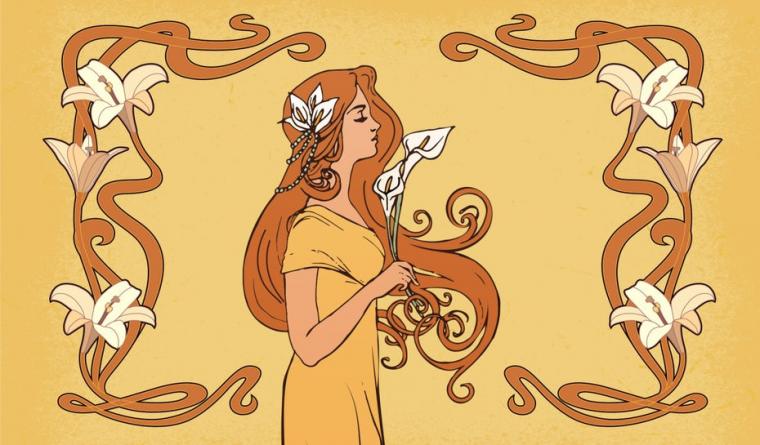
The German American Heritage Center presents “Art Nouveau: An International Tour" -- November 19.
Friday, November 19, 2 p.m.
Presented by the German American Heritage Center
Led by St. Ambrose University professor Dr. Terri Switzer, the German American Heritage Center's virtual November 19 program Art Nouveau: An International Tour will provide fascinating information into the artistic movement that swept the globe during the turn of the 20th century, with the presentation delivering particular insight into the Art Nouveau movement in Germany.
An international style of art, architecture, and applied art, especially the decorative arts, Art Nouveau is known in different languages by different names, including Jugendstil in German. The style was most popular between 1890 and 1910 during the Belle Époque period that ended with the start of World War I in 1914, and was seen as a reaction against the academic art, eclecticism, and historicism of 19th century architecture and decoration. Art Nouveau was often inspired by natural forms such as the sinuous curves of plants and flowers, and other characteristics included a sense of dynamism and movement, often given by asymmetry or whiplash lines, and the use of modern materials, particularly iron, glass, ceramics, and later concrete to create unusual forms and larger open spaces.
The first Art Nouveau houses and interior decoration appeared in Brussels in the 1890s, in the architecture and interior design of houses designed by Paul Hankar, Henry van de Velde, and especially Victor Horta, whose Hôtel Tassel was completed in 1893. The style moved quickly to Paris, where it was adapted by Hector Guimard, who saw Horta's work in Brussels and applied the style for the entrances of the new Paris Métro. It reached its peak at the 1900 Paris International Exposition, which introduced the Art Nouveau work of artists such as Louis Tiffany, and Art Nouveau appeared in graphic arts in the posters of Alphonse Mucha and the glassware of René Lalique and Émile Gallé. By 1914, however, Art Nouveau was largely exhausted, and in the 1920s, it was replaced as the dominant architectural and decorative art style by Art Deco and then Modernism. But the Art Nouveau style began to receive more positive attention from critics in the late 1960s, with a major exhibition of the work of Hector Guimard at the Museum of Modern Art in 1970.
Dr. Terri Switzer, the presenter for the German American Heritage Center's November 19 Art Nouveau program, is Professor and Director of the Art History & Museum Studies Program at St. Ambrose. She earned a B.A. in International Studies, Economics, and French with a Russian minor from Butler University, followed by a Certificate in Russian Studies from Leningrad State Technical University. A former Fulbright-Hays scholar, Switzer received her PhD and M.A. in Art History and M.A. in Arts Administration from Indiana University. Her research explores nationalism during the 19th and 20th centuries, particularly in Central and Eastern Europe and Russia, and her work has been included in 2002's Water, Leisure and Culture: European Historical Perspectives, 2003's Art, Culture and National Identity in Fin-de-Siècle Europe, and 2018's A Companion to Nineteenth-Century Art.
Art Nouveau: An International Tour will be presented at 2 p.m. on November 19, registration for the event is free for German American Heritage Center members and $5 for non-members, and more information is available by calling (563)322-8844 and visiting GAHC.org.










